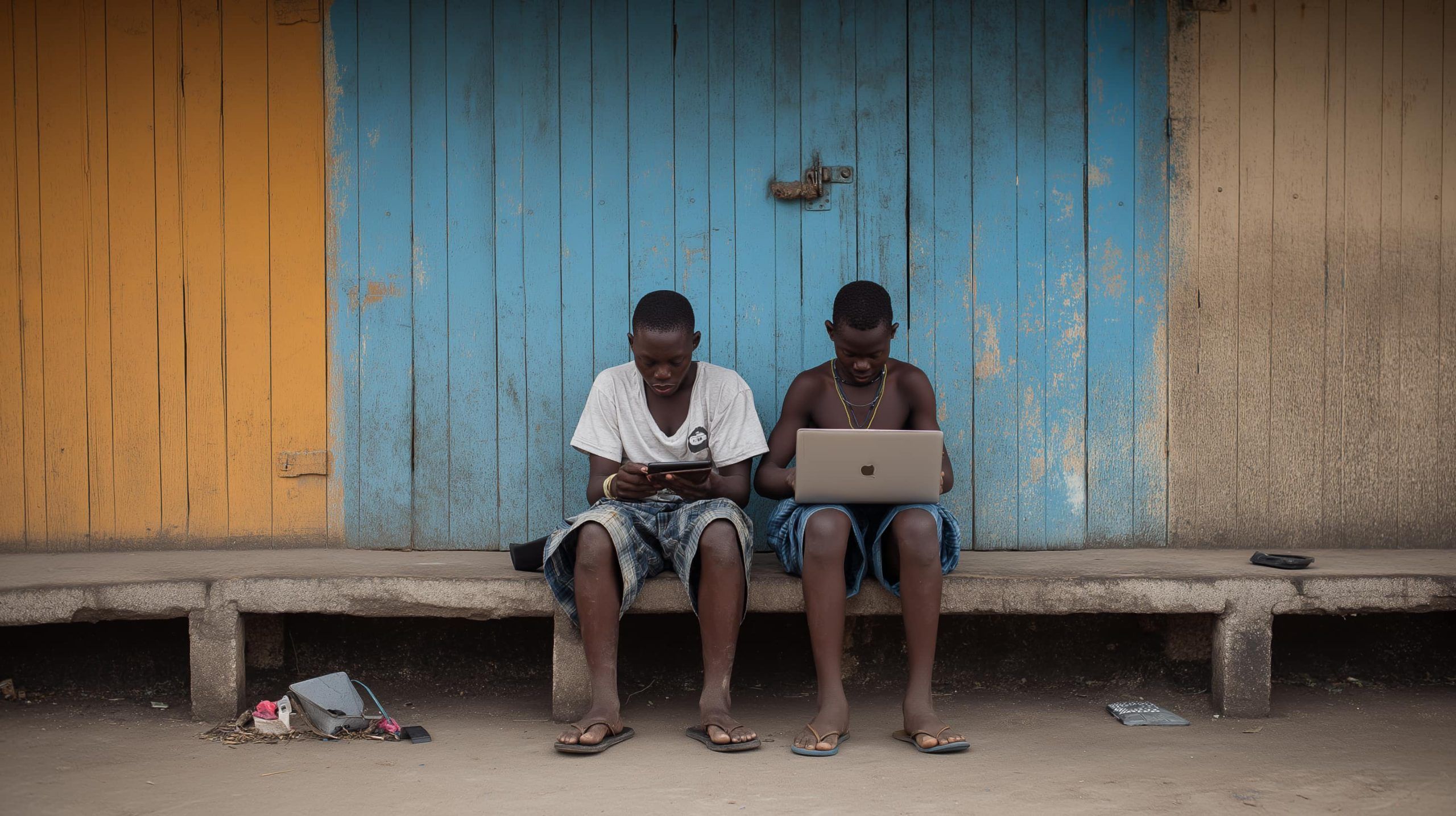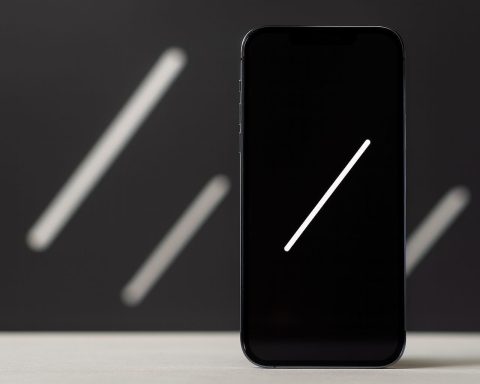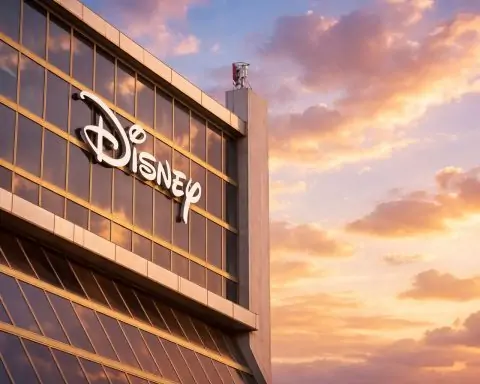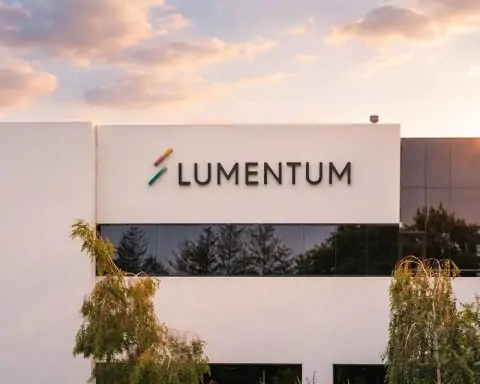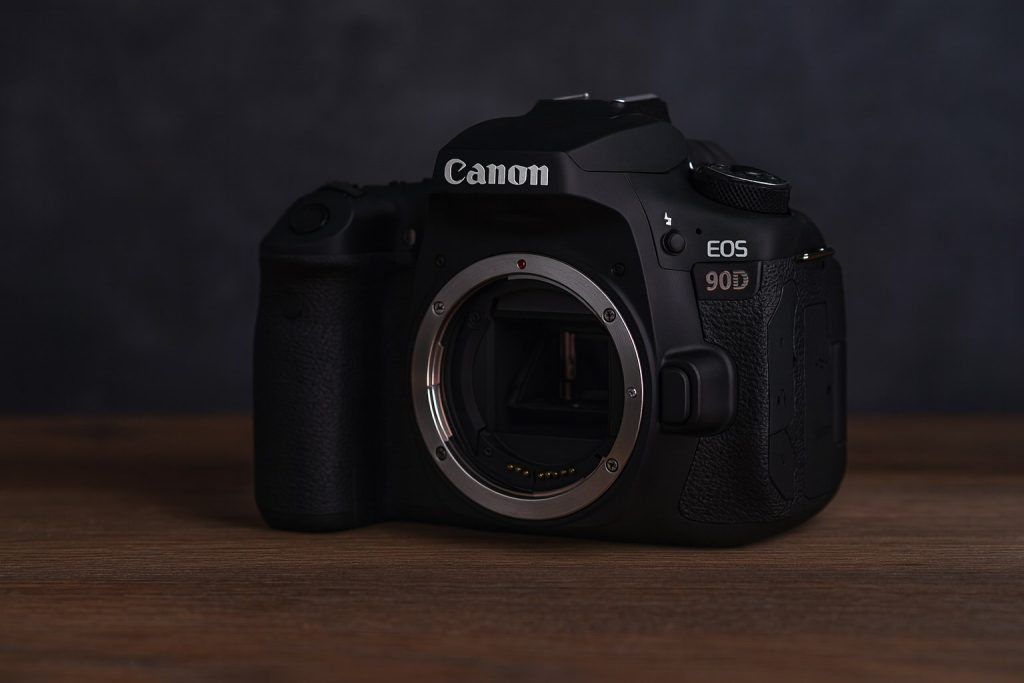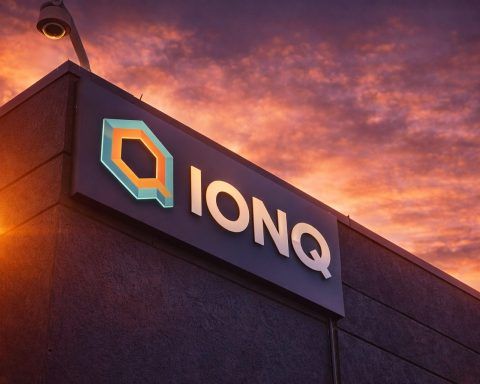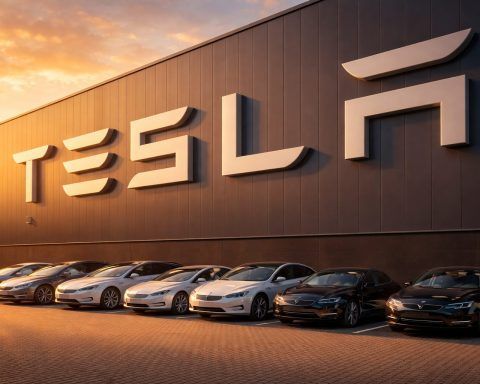- As of early 2025, Liberia has about 1.84 million internet users, representing 32.4% of the population, up from 19% in 2019.
- There were over 5.11 million active mobile connections in 2025, roughly 90% of the population, with many Liberians owning multiple SIMs.
- By 2025, 87.2% of all mobile connections were on broadband 3G/4G networks, with 4G strongest in urban centers and along major highways.
- ACE submarine cable landed in Liberia in 2011, enabling fiber backhaul and connecting Monrovia to international bandwidth with over 80 major institutions connected.
- In 2021, the LTA licensed CSquared to deploy a 350 km open-access fiber backbone to reach 10–13 towns, linking Monrovia with interior Bong, Margibi, Nimba and borders to Guinea and Ivory Coast.
- Orange Liberia, with ZTE, installed 128 new rural sites in 2024 using solar-powered 800/900 MHz LTE “Rural EcoSite” towers, adding coverage for over 580,000 rural residents.
- In October 2024 the Liberia Telecommunications Authority licensed SpaceX Starlink on a one-year provisional basis (effective November 2024) to roll out nationwide satellite internet.
- Starlink is advertised to deliver speeds of 50–150 Mbps with latencies of 20–40 ms, with typical hardware kit around $600 and service about $100 per month in other markets.
- In 2019, the LTA imposed a floor price of 0.0218 USD per MB (about $22 per GB), briefly making Liberia the 5th most expensive country for mobile data.
- The government aims for universal internet access (90%+ of the population) by 2030, with an estimated investment of about $432 million (roughly $36 million per year) to fund infrastructure, skills, and affordable access programs.
Overview: Internet Access in Liberia Today
Liberia’s internet landscape is rapidly evolving from near-zero connectivity during the civil war years to a growing digital economy today. As of early 2025, roughly one-third of Liberians use the internet (about 1.84 million users, representing 32.4% of the population) [1]. This marks steady growth from just 19% internet penetration in 2019 [2]. Still, almost 67% of the population remains offline [3], indicating a significant digital divide. Mobile phones are the primary on-ramp to the internet – Liberia had over 5.11 million mobile connections active in 2025 (about 90% of the population, many people owning multiple SIMs) [4]. By contrast, fixed broadband lines are extremely scarce (less than 0.3 subscriptions per 100 people in 2022) [5].
Internet usage trends: Connectivity is concentrated in cities (over half the population lives in urban areas), while rural Liberia lags behind. Urban residents enjoy far greater access to mobile networks and cybercafés, whereas many remote villages remain unconnected. Nevertheless, internet use is rising across the country as smartphone adoption increases and networks expand. Annual growth in internet users was around 6.5% from 2024 to 2025 [6]. Social media use is also climbing, with about 16.6% of Liberians (941,000 people) active on social platforms by 2025 [7] [8]. Compared to neighboring countries, Liberia’s ~30% internet penetration is ahead of Sierra Leone (~21% in 2023) [9] but trails Côte d’Ivoire (around 40–45%) [10], highlighting room for improvement.
Mobile Broadband Dominates Connectivity
Mobile broadband is the backbone of Liberia’s internet access, accounting for the vast majority of connections. The country has two major mobile network operators – Lonestar Cell MTN and Orange Liberia – which operate nationwide GSM networks offering 2G voice, 3G and 4G data services [11]. A third operator, the state-owned Liberia Telecommunications Corporation (rebranded as LTC Mobile in 2022), has also entered the mobile data market [12], though the market is largely dominated by the two incumbents.
3G and 4G coverage: Both MTN and Orange have rolled out 3G widely and are aggressively expanding 4G LTE coverage beyond the capital Monrovia. By 2025, an estimated 87.2% of all mobile connections in Liberia are on “broadband” 3G/4G networks (as opposed to older 2G-only connections) [13]. In practice, 4G coverage is strongest in urban centers and along major highways, but it is extending into previously underserved counties. In 2024, Orange Liberia (with equipment partner ZTE) installed 128 new rural mobile sites using low-band 800/900 MHz LTE to cover remote communities [14]. These solar-powered “Rural EcoSite” towers provide 2G voice and 4G data service and added coverage for over 580,000 people in rural areas that previously had little or no signal [15] [16]. Lonestar MTN has undertaken similar expansions – for example, launching 4G in Grand Cape Mount County in partnership with a mining company, which brought high-speed coverage to several villages and an isolated gold mine site for the first time [17] [18]. Thanks to these efforts, many interior districts are coming online, though some remote towns still rely on patchy 2G signals or have no coverage at all.
Mobile network performance: The quality of Liberia’s mobile broadband is improving but still lags global standards. On 4G networks, users in Monrovia can typically get a few Mbps up to low double-digit Mbps speeds. (For context, the median fixed broadband speed in Liberia was measured at 7.35 Mbps in 2023 [19], and mobile speeds tend to be in a similar range or slightly higher on 4G.) Network upgrades have reduced congestion – Orange reports that after recent optimizations and spectrum re-farming, overall data traffic carried grew by 50% with significantly less network strain [20] [21]. In 2024, Orange Liberia won Ookla’s Speedtest awards for having the fastest mobile network and best coverage in the country [22] [23], reflecting these investments in capacity. While 5G technology is not yet deployed in Liberia (both major operators remain focused on 4G LTE for now), the ongoing upgrades to 4G and backhaul networks are laying groundwork for potential 5G in the future.
Pricing and affordability: A fierce price war between Orange and MTN in the late 2010s drove calling and data costs extremely low, which benefited consumers but squeezed operator revenues. In response, the telecom regulator (Liberia Telecommunications Authority, LTA) imposed a floor price in 2019 to halt “free” promo offers and stabilize the market [24]. This regulation ended popular packages like “3 days of unlimited calls for $1” and set a minimum tariff of $0.0218 per MB of data (about $22 per GB) [25] [26]. The result was a sharp increase in data prices, making Liberia briefly the 5th most expensive country in the world for mobile data in 2019 [27]. As of 2023, 1 GB of mobile data cost roughly 8% of monthly income for higher-earning Liberians – and an exorbitant 47.5% of monthly income for those in the poorest 20% [28] [29] – far above the UN affordability target of 2% of income. These high costs put internet access out of reach for many, especially in rural areas where incomes are lowest. Although competition and regulatory tweaks have led to some price reductions since 2019, mobile internet in Liberia remains relatively expensive by global standards, contributing to a usage gap even in areas with coverage.
Limited Fixed-Line and Fiber Broadband Infrastructure
Outside of the mobile sphere, Liberia’s fixed broadband infrastructure is still in its infancy. Years of civil conflict destroyed much of the country’s telephone lines, and traditional fixed-line service never fully recovered. Liberia’s state telco Libtelco (now LTC Mobile) has only a modest fixed network footprint in central Monrovia, and copper DSL is virtually nonexistent for residential users. As a result, the number of fixed broadband subscriptions is near zero (roughly 0.27 per 100 people in recent ITU data) [30]. Most households and businesses rely on mobile wireless internet or fixed-wireless solutions rather than cabled broadband.
However, Liberia has made strides in building out fiber-optic backbone infrastructure in the last decade. A milestone was the arrival of the Africa Coast to Europe (ACE) submarine fiber cable in 2011, which connected Liberia to high-speed international bandwidth for the first time [31]. The Cable Consortium of Liberia (CCL) – a public-private partnership between the government, Lonestar, and Orange – operates Liberia’s landing station on the ACE cable [32] [33]. This undersea cable dramatically lowered the cost of internet wholesale bandwidth and “revolutionized” connectivity in Monrovia [34], enabling fiber backhaul to cell towers and high-speed links for large institutions. Over 80 major institutions (businesses, banks, embassies, ISPs, etc.) in Monrovia were quickly connected via fiber after ACE went live [35].
Yet, the benefits of ACE initially failed to reach beyond the capital, because Liberia lacked any national fiber backbone to distribute bandwidth inland [36] [37]. The absence of terrestrial fiber links left rural areas dependent on microwave relay towers or satellite for backhaul, limiting broadband expansion. Recognizing this, the government and partners launched projects to extend fiber across the country. In the late 2010s, USAID and Google jointly funded the deployment of a fiber ring around greater Monrovia to improve urban broadband and create an open-access network [38]. This effort evolved into a broader partnership with CSquared, an independent wholesale fiber operator backed by Google and international investors. In 2021, the LTA licensed CSquared to extend fiber optics nationwide, beyond Monrovia [39]. The project under CSquared aims to build a 350 km open-access fiber backbone reaching at least 10–13 major towns along Liberia’s central and northern corridors [40] [41]. The planned routes will link Monrovia to the interior city of Gbarnga, the mining hub Yekepa in Nimba County, and onwards to the borders of Guinea and Côte d’Ivoire, interconnecting with regional networks [42] [43]. When completed, this backbone will bring broadband fiber for the first time to a dozen provincial cities and enable local ISPs and mobile operators to tap into ACE capacity without relying on expensive satellite or microwave links.
Last-mile fiber and wireless ISPs: In Monrovia and a few other cities, fiber-to-the-premises is slowly emerging for businesses and high-end customers. Orange Liberia, for instance, offers “Orange Fiber” home broadband in select neighborhoods and has Fiber-To-the-Home (FTTH) packages listed for corporate clients [44]. A handful of private ISPs also operate in the market. One notable player is Connect Services Liberia, a Monrovia-based ISP that delivers broadband via a mix of its own fiber links and LTE fixed-wireless systems [45] [46]. Connect Services has built a data center and “edge” network to serve clients with dedicated bandwidth, and it provides managed connectivity to NGOs, schools, and businesses with full city coverage and expanding rural reach [47] [48]. To reach areas beyond its fiber network, the company also leverages satellite (VSAT) connectivity, offering turn-key internet for remote communities and branch offices via satellite backhaul [49]. Other small ISPs and wireless operators use technologies like WiMAX and point-to-point microwave to serve niche markets (though WiMAX usage has waned as 4G became prevalent) [50] [51]. Overall, while the fixed ISP sector remains limited, these providers are helping bridge gaps with hybrid fiber-wireless-satellite solutions, especially for enterprise and development-sector connectivity.
Looking ahead, Liberia’s fiber infrastructure is poised to grow rapidly. The ongoing CSquared backbone project, backed by development partnerships, is a major step toward open-access fiber that any operator can use to deliver broadband up-country [52]. There is also interest in attracting additional submarine cables for redundancy – currently Liberia relies primarily on the single ACE cable, so any outage to ACE (or its landing station) could disrupt internet nationwide. Plans have been discussed to land a second cable (such as Google’s Equiano cable or others) to ensure backup capacity, though no second cable landing is active yet. In the meantime, having at least one fiber highway across Liberia will significantly improve domestic bandwidth and reliability in the next few years, enabling faster internet speeds and possibly cheaper data for consumers as competition increases among backhaul providers.
The Rise of Satellite Internet Connectivity
Satellite internet is playing an increasingly critical role in Liberia’s connectivity mix, especially for remote and rural areas beyond the reach of cell towers or fiber lines. Historically, VSAT (Very Small Aperture Terminal) satellite links were the only way to bring internet to Liberia before the ACE submarine cable. Even today, many villages, mining camps, logging concessions, and border areas rely on satellite broadband for basic connectivity. Traditional geostationary satellite services (offered by providers like Hughes, Intelsat, or Eutelsat) have provided coverage across Liberia for years, but they come with high latency (~600ms) and high costs, making them used mainly by NGOs, businesses, and government offices in remote locales. These legacy VSAT links often offer modest speeds (a few Mbps) and data usage is expensive, which limited their adoption for general public internet access.
In the past two years, however, next-generation satellite internet has arrived in Liberia, bringing new hope for bridging the digital divide. The most game-changing development is the entry of SpaceX’s Starlink, a low Earth orbit (LEO) satellite constellation. In October 2024, the Liberia Telecommunications Authority signed a landmark agreement licensing Starlink to operate in Liberia [53]. This one-year provisional license (effective November 2024) allows Starlink to roll out its high-speed satellite internet service countrywide while the LTA evaluates performance and sets consumer protection and quality standards [54] [55]. For the first time, Liberia will have truly universal coverage – Starlink’s satellites can beam internet to any location in the country, no matter how remote [56] [57]. Officials hailed this as a transformational moment: “for the first time in our country’s history, we are making universal internet access a reality… Starlink will deliver high-speed internet to every village, town, and community” said the LTA Acting Chair [58]. This aligns with the national ICT policy goal of inclusive digital infrastructure, as the government sees Starlink as a fast way to reach underserved areas that terrestrial networks still haven’t connected [59].
Starlink’s impact and advantages: Unlike geostationary VSAT, Starlink uses thousands of LEO satellites orbiting much closer to Earth. This allows broadband speeds (50–150 Mbps) and low latency (~20–40ms) comparable to terrestrial broadband. Such performance can support video streaming, online learning, telehealth, and other applications that were nearly impossible over old satellite links. Crucially, Starlink can be deployed rapidly – all that’s needed is a small dish antenna and clear sky view. This makes it far quicker to cover rural Liberia than waiting for fiber-optic cables or cell towers to be built in each village. As one local tech enthusiast noted, Liberia has had the ACE fiber cable for ~13 years but internet penetration remained low at ~33% [60] [61]; now Starlink’s fast deployment might finally “bridge the digital divide” by reaching the other two-thirds of the population still offline [62]. Satellite beams can blanket the entire country’s terrain – from the dense rainforests and coastal fishing hamlets to inland highlands – something no single mobile network can do. In fact, Starlink has already launched in several African countries with similar infrastructure challenges (Nigeria, Kenya, Rwanda, Mozambique, etc.), and Liberia is leapfrogging onto that list [63].
Cost and accessibility: The big question for satellite internet is affordability. Starlink’s standard pricing in other countries has been around US$600 for the hardware kit and ~$100 per month for service – far above what most Liberian households can pay. The LTA is aware of this and has been working with Starlink to finalize a pricing model suitable for Liberia, aiming to make it “affordable for consumers” [64]. The plan likely involves a one-time equipment fee (for the Starlink dish and router) and a flat monthly data subscription [65]. The government may explore subsidies or bulk purchase programs (possibly letting local ISPs or community co-ops resell Starlink bandwidth) to bring costs down for rural users. Details are to be confirmed at Starlink’s official launch in Liberia (expected in late 2024/early 2025), but the focus is on ensuring the service is “accessible and beneficial to a broad audience” rather than just expats or large companies [66]. Even if individual subscriptions remain pricey, Starlink could be strategically used to connect schools, clinics, and community centers in off-grid areas, effectively creating Wi-Fi hotspots for shared public use. Additionally, other satellite providers are entering the fray: for example, OneWeb (another LEO constellation) and Eutelsat’s Konnect service have coverage over West Africa and are seeking local partners in Liberia [67] [68]. These alternatives could introduce competition in satellite internet services, potentially improving pricing and options for consumers.
In summary, satellite internet’s importance in Liberia is greater than ever. It offers a lifeline of connectivity to regions where building physical infrastructure is difficult or delayed. A rural farmer cooperative or a health clinic deep in Lofa or Rivercess County can get online via satellite even if no fiber or cell tower is nearby. This is a powerful equalizer for digital access. The government views Starlink and similar services as complementary to ongoing fiber and mobile expansions – satellites can cover the last-mile gaps and extremely low-density areas that won’t see an economic case for fiber or towers for years. Going forward, we can expect a hybrid connectivity approach: trunk fiber networks delivering high capacity between cities, 4G/5G mobile networks covering populous zones, and satellite links filling in the hard-to-reach pockets and providing redundancy. Satellite internet is no longer a last resort; it’s becoming a central pillar of Liberia’s national broadband strategy to ensure no community is left behind.
Government Initiatives and Public-Private Partnerships
The Liberian government, regulators, and international partners have been actively involved in advancing the country’s digital access through policies and joint initiatives. A cornerstone is Liberia’s National ICT Policy (2019–2024), which set ambitious targets for universal, affordable access and recognized ICT as a driver of socio-economic development [69]. While implementation has been slow, the policy framework underscores government commitment to expanding connectivity to all citizens. Below are key roles the public sector and partnerships are playing:
- Policy and regulation: The Liberia Telecommunications Authority (LTA) serves as the independent regulator, overseeing licenses, spectrum, and consumer protection. It has balanced encouraging competition with ensuring industry viability. For instance, after years of rock-bottom tariffs due to telecom price wars, the LTA in 2019 introduced a floor price on voice and data (as noted earlier) to prevent unsustainably low pricing [70] [71]. Though controversial, the LTA argued this was needed to maintain network investment and operator health [72]. The regulator also mandates SIM card registration (linked to a biometric national ID database) for security and to crack down on fraud [73]. In 2024, the LTA took a bold step in licensing Starlink on a trial basis, illustrating a flexible, pro-innovation regulatory stance to attract new technologies. It is also drafting quality of service standards for satellite broadband and updating regulations to accommodate things like satellite user terminals and cross-border fiber links [74].
- Universal access efforts: The government has shown interest in Universal Service Fund programs (common in many countries) to finance rural connectivity projects, though progress has been limited. Instead, Liberia has leveraged direct partnerships to extend service to underserved areas. A good example is the Bea Mountain Mining partnership with Lonestar, where a private mining company co-funded a cell tower that not only serves the mine but also provides coverage for locals in a remote county [75]. This kind of public-private collaboration (encouraged or facilitated by local authorities) helps fill coverage gaps where purely commercial investment is lacking.
- Public-private partnerships for infrastructure: Liberia’s biggest connectivity gains have come through PPP projects with international support. The Cable Consortium of Liberia (CCL), formed in 2010, was a PPP that brought together the government and the two mobile operators to co-invest in the ACE submarine cable landing [76] [77]. This shared approach lowered costs and ensured all parties had access to the global internet gateway. Building on that, the USAID-Google-CSquared partnership mentioned earlier is another PPP model – the government provided licensing and right-of-way support, USAID and World Bank provided funding and convening power, and a private company (CSquared) is executing the fiber backbone deployment [78] [79]. The open-access fiber backbone under CSquared means any licensed ISP or operator can lease fiber capacity on equal terms, which fosters competition and avoids duplicating infrastructure. In essence, the government and donors absorbed upfront risks that private telcos might not take alone, kick-starting infrastructure that will benefit the whole market. As Mr. H. Sama Nwana (a consultant on the project) noted, the backbone extension will connect counties like Bong, Margibi, and Nimba, covering at least 10 towns and reaching the Guinea and Ivory Coast borders – bringing “more people access to the digital economy” and boosting competition among providers for last-mile services [80] [81]. The significance of this cannot be overstated: it propels Liberia closer to an integrated national network rather than isolated urban islands of connectivity.
- International development programs: Beyond infrastructure, organizations like the World Bank and ITU have been involved in technical assistance and funding. World Bank projects have supported e-government systems and sector reforms (e.g., a “Digital Liberia” project helped connect government ministries to fiber and improve digital services). USAID’s Digital Connectivity and Cybersecurity Partnership (DCCP) funded policy advisors who helped Liberia craft its new fiber deployment strategy and regulatory framework [82] [83]. The Alliance for Affordable Internet (A4AI) has also engaged with Liberia, producing research on broadband affordability and advising on policy best practices [84] [85]. These collaborations bring in global expertise and sometimes grant financing to tackle issues like rural access, ICT skills training, and expanding the digital economy.
- Government-driven programs: The Ministry of Posts & Telecommunications (which oversees ICT policy) has launched initiatives like setting up “Digital Village” pilot projects – community ICT centers with internet access – to promote digital literacy outside Monrovia [86]. There have also been discussions of leveraging the Universal Access Fund (collected from telecom operator levies) for rural telephony and internet, though disbursement of those funds has faced delays. In terms of direct government provision, after rebranding to LTC Mobile, the state telco has reportedly started offering some mobile and fixed-wireless services. However, its market share is small, and it often partners with private operators (for example, Libtelco/LTC partnered with K3 Telecom a few years ago to deploy a fixed-wireless broadband network in Monrovia). The government generally prefers enabling the private sector through policy rather than being an active telecom service provider itself, aside from niche areas like government networks.
In summary, Liberia’s government and international partners are playing an enabling role – setting the rules, co-investing in backbone facilities, and pushing initiatives to ensure connectivity reaches all citizens. The approach has been one of leveraging partnerships: whether it’s co-investing in a submarine cable, teaming with tech companies to build fiber, or licensing cutting-edge satellite services, Liberia is trying to leapfrog its infrastructure constraints through collaboration. The challenges are still significant (as discussed next), but these efforts provide a foundation for progress.
Challenges: Affordability, Infrastructure Gaps, and the Digital Divide
Despite recent progress, Liberia faces stubborn challenges in making internet access widely available, affordable, and reliable. Key hurdles include:
- High cost of services: Internet access in Liberia is one of the most expensive in the world relative to income. The combination of limited competition (only two major mobile ISPs) and heavy operational costs means data prices are steep. As noted, the poorest Liberians would have to spend nearly half of their monthly income just to buy 1GB of mobile data [87] [88]. Even average earners find internet packages pricey – a common refrain is that data bundles “finish too quickly” for the cost. The 2019 introduction of minimum tariffs [89], while stabilizing the market, also locked in higher prices per MB. For many students, farmers, and low-wage workers, the internet remains a luxury. Affordability is a major barrier to increasing the usage of the internet even where it is technically available.
- Device affordability: Related to cost is the price of internet-enabled devices. Smartphones, laptops, and routers are expensive imports. A basic Android smartphone cost about 40% of an average monthly income in 2020 [90]. Many Liberians still use feature phones that cannot access the modern internet. This device gap especially affects rural and low-income populations, as well as women (who often have less access to technology). Without affordable smartphones or computers, millions are effectively prevented from coming online even if network coverage reaches their area.
- Infrastructure limitations: Liberia’s physical infrastructure presents severe challenges to connectivity. The electricity grid is small and unreliable, so telecom operators must power nearly all cell towers and facilities with diesel generators. Fuel is expensive, and running generators adds considerable cost (and sometimes downtime when fuel shortages occur). The poor condition of roads and transport infrastructure makes it difficult to build and maintain telecom sites in the interior [91]. Simply hauling tower equipment or fiber reels to remote counties can be a logistical nightmare, especially during the rainy season when roads turn to mud. Additionally, Liberia’s lack of legacy telecom infrastructure (e.g., buried cables, telephone poles) means everything must be built from scratch – a costly endeavor. The country’s one international fiber cable (ACE) has no redundancy; if it breaks (as happened to other countries on the same cable), Liberia could suffer a nationwide internet outage. Redundancy via a second submarine cable or satellite backup is not yet fully in place, leaving the network vulnerable. These infrastructural issues collectively result in high operational costs and fragility of the network, which translate into higher prices and occasional service outages.
- Urban–rural digital divide: There is a stark geographical disparity in internet access. Monrovia and a few coastal cities enjoy multiple mobile operators, fiber points of presence, and generally better service options. In contrast, many villages in rural Liberia have no internet or even electricity. Rural mobile towers (where they exist) often only provide 2G signals sufficient for calls/text, but not for internet data. Although 4G is expanding, vast areas of the southeast (Grand Gedeh, River Gee, Sinoe) and parts of the northwest (Gbarpolu, Lofa) remain sparsely covered. According to population data, ~45% of Liberians live in rural areas [92] [93], but their internet usage is far below that of urban residents. This digital divide exacerbates other inequalities – rural communities have less access to online education, markets, and information. Encouragingly, initiatives like Orange’s 100 new rural sites and the Starlink rollout aim directly at these blind spots. But until those are fully realized and adoption grows, location determines connectivity for many Liberians.
- Human capacity and literacy: Another challenge is the shortage of ICT skills and digital literacy. There is a dearth of trained technicians and engineers to plan, install, and maintain networks locally, so Liberia relies on foreign contractors or a small pool of experts, which can slow down projects and increase costs [94]. On the user side, many Liberians lack experience with computers or advanced internet applications beyond basic social media on phones. This can limit the demand for internet (people may not see the full benefits) and also limits the growth of local digital content and services. The gender gap is notable – men are about 49% more likely to use the internet than women in Liberia [95], due to socio-economic factors, lower device ownership among women, and cultural norms. Efforts in digital skills training, community ICT centers, and local language content are needed to drive meaningful usage once access is available.
- Regulatory and market hurdles: While the regulatory environment has improved, some hurdles persist. The sector still faces high taxation and import duties – telecom equipment, smartphones, and even scratch cards have various taxes and fees that ultimately make services more expensive [96]. Bureaucratic processes can delay cell site permits or right-of-way for fiber deployment. Additionally, the small size of Liberia’s economy and its relatively low consumer spending power mean that telecom operators have lower returns on investment compared to larger African markets. This can slow their rollout plans or make them cautious about investing in sparsely populated regions. The LTA’s interventions (like the price floor and a proposed additional surcharge on telecom services in 2019 [97]) have sometimes been met with public backlash and legal challenges, creating an uncertain environment. Maintaining a balance between a healthy competitive market and one that can attract investment remains an ongoing challenge.
In essence, Liberia’s internet sector must overcome a combination of economic, infrastructural, and social obstacles. The issues of cost and coverage are interlinked: it is expensive to extend networks to poor, remote communities, yet without doing so, those communities cannot get online to generate the usage and revenue that might eventually lower costs. The government and partners will need to continue subsidizing rural infrastructure and exploring innovative solutions (like shared infrastructure, community networks, and demand aggregation) to break this cycle. Addressing electricity and transport bottlenecks – largely outside the telecom sector’s direct control – will also greatly aid digital expansion. Despite these challenges, the momentum in recent years is cause for optimism that they can be gradually mitigated.
Regional Context and Future Outlook
Liberia’s quest for connectivity does not happen in isolation – it’s useful to compare with regional peers and consider the trends shaping the future. In West Africa, internet penetration varies widely. As noted, Côte d’Ivoire (~40-45%) and Ghana (~58%) are ahead of Liberia, thanks to more developed infrastructure and larger urban populations, while Sierra Leone (~21-30%) and Guinea (~26-35%) are in a similar range or slightly behind Liberia [98] [99]. All ECOWAS countries are grappling with the same core issues of affordability and rural access. For instance, Sierra Leone also relies on a single submarine cable and has vast rural areas offline, while Ivory Coast has multiple undersea cables and a thriving competitive ISP market driving prices down. These comparisons put Liberia’s situation in perspective – it is catching up but still below the African average (which is about 35% internet penetration). The government’s goal, in line with the UN Broadband Commission, is to reach universal internet access (90%+ population) by 2030. A4AI and ITU estimate this would require around $432 million of investment for Liberia – roughly $36 million per year on infrastructure, skills, and affordable access programs through 2030 [100] [101]. Mobilizing this level of investment will require continued support from development partners and the private sector.
Looking to the future, there are several key developments and trends that will shape Liberia’s internet:
- Mobile network upgrades and expansion: Both Orange and MTN have signaled continued investment. In 2025, Orange Liberia announced a $200 million network expansion plan over six years (through 2031) focused on accelerating rural coverage and upgrading services [102]. This massive investment – revealed at the opening of Orange’s new headquarters in Monrovia – aims to improve customer experience and reach new subscribers in underserved areas, as traditional voice revenues plateau and data becomes the growth driver [103]. We can expect hundreds of new 4G (and potentially 5G-ready) base stations to be added, plus enhancements like LTE-A or other technologies to boost speeds. Lonestar MTN is likely to follow suit to protect its market share; it has already modernized over 100 sites in Monrovia to 4G in 2023 and launched 4G in multiple counties [104] [105]. Neither operator has publicly mentioned 5G launch timelines, but given global trends, they may begin trials in the coming years, especially in dense urban spots, once the market is ready. The mobile operators are also expanding their service portfolio (for example, mobile money and fintech services) which indirectly supports internet use as more people get smartphones to use these services.
- Completion of the national fiber backbone: By around 2025–2026, the CSquared open-access fiber network is expected to connect major provincial cities and neighboring country networks [106]. This will be a game-changer for inland Liberia – reducing latency and improving the quality of connections outside Monrovia. ISPs in cities like Gbarnga, Buchanan, Ganta, and others will be able to obtain high-capacity bandwidth at lower cost, which they can then distribute via Wi-Fi or fiber to homes and cybercafés. It could spur the emergence of local broadband companies in those areas, creating jobs and improving services. Additionally, having fiber links to Guinea and Ivory Coast will allow regional transit of internet traffic, offering Liberia alternative routes if the ACE submarine cable has issues, and even enabling Liberia to buy capacity from other cables indirectly (for instance, via Ivory Coast’s SAT-3 or METISS cables). In essence, Liberia will become much better integrated into regional connectivity, increasing resilience.
- Satellite proliferation: The Starlink pilot will likely transition to a full commercial service if the first year is successful. By 2025, we may see Starlink user terminals active across Liberia – from schools in rural Bong County to businesses in Harper on the southeastern tip. Starlink’s constellation is still growing, and SpaceX will launch newer generation satellites offering even more bandwidth. OneWeb’s LEO constellation is nearing global completion as well, and could partner with local telecom firms to offer backhaul or enterprise connections. Eutelsat Konnect has already advertised Ka-band satellite internet for Liberia with up to 100 Mbps speeds, which could be a more affordable (if lower capacity) satellite option for homes. The net effect is that by 2025–2026, Liberia could have multiple satellite broadband choices. This competition may drive down prices and also ensure coverage in case one provider faces issues. It’s plausible that within a couple of years, even some consumer-facing satellite internet plans (with smaller data caps) might emerge at price points affordable to middle-class urban users or community co-ops. The government might also utilize satellite connectivity for critical public services (e.g., connecting remote clinics to telemedicine, or powering e-learning in village schools).
- Improving affordability initiatives: Stakeholders are aware that bringing prices down is vital to drive adoption. We will likely see new data pricing strategies – for example, “education bundles” or zero-rated content for students, subsidized by government or NGOs, to allow free access to educational websites. The government may revisit the idea of removing the additional surcharges/taxes on data to make it cheaper (the Senate already pushed back on a planned extra mobile surcharge in 2019 amid public outcry) [107]. As the cost of providing service drops (thanks to more fiber and cheaper satellite bandwidth), there’s hope that savings can be passed to consumers. International programs like A4AI could assist Liberia in implementing best practices for affordable internet (such as infrastructure sharing, spectrum pricing that incentivizes rural rollout, and devices subsidy programs).
- Digital services growth: As connectivity improves, there will be a positive feedback loop with digital content and services. For instance, Liberia’s government is digitizing services like passport applications, business registrations, and tax filings – these require reliable internet access to truly benefit citizens. The spread of internet will enable more e-government usage, which in turn will encourage more people to get online for those services. Similarly, e-commerce and online banking (still nascent in Liberia) could start to grow. Liberia’s youthful population (median age ~18) [108] is tech-savvy and quick to adopt trends, so with better internet, we might see a surge in local YouTubers, developers, and digital entrepreneurs tapping into global opportunities. The diaspora, which is large relative to the local population, can also drive demand for communication services (video calls, etc.) and content exchange.
In conclusion, Liberia’s internet future looks far more promising than its past. The country is on the cusp of significant improvements in both coverage and capacity. With committed investments from mobile operators, the rollout of a national fiber backbone, and the advent of satellite broadband reaching every corner, Liberia could leap ahead in closing its digital gap. There are still serious challenges to overcome – cost, power, and last-mile access for the poorest – but these are being tackled through a mix of innovation and policy measures. If momentum is sustained, Liberia can move from 30% internet penetration toward a majority of its citizens being online in the next five years. The transformative potential of that – for education, healthcare, commerce, and governance – is immense. As one optimistic development report put it, Liberia’s digital transformation could “drive inclusive growth”, connecting millions who have thus far been left out of the information age [109]. In a country that rebuilt from conflict not long ago, the ongoing internet revolution – from 4G towers rising in remote villages to satellites beaming Wi-Fi from the sky – is poised to unlock new opportunities and ensure Liberia is not left behind in the global digital economy. The goal of a connected Liberia, bridging urban and rural, is finally within sight.
Sources:
- DataReportal, Digital 2025: Liberia – Key internet usage statistics [110] [111]
- FrontPageAfrica – LTA Awards Starlink One-Year Provisional Licensing… (Oct 2024) [112] [113]
- Developing Telecoms – Orange Liberia, ZTE boost rural connectivity with new 2G/4G sites (Aug 2024) [114] [115]
- DAI Global Digital – Inclusive Connectivity in Liberia Through Technical Engagement (Mar 2023) [116] [117]
- Alliance for Affordable Internet – Internet is Unaffordable in Liberia (Dec 2020) [118] [119]
- FrontPageAfrica – Liberia 5th Most Expensive Mobile Data in World (Nov 2019) [120] [121]
- U.S. Dept. of Commerce (trade.gov) – Liberia Telecommunications Country Guide (June 2024) [122] [123]
- We Are Tech Africa – Orange Liberia $200M Rural Expansion Plan by 2031 (May 2025) [124] [125]
- DataReportal, Digital 2023: Côte d’Ivoire – Internet penetration in Côte d’Ivoire [126]; Digital 2023: Sierra Leone – penetration in Sierra Leone [127].
References
1. datareportal.com, 2. a4ai.org, 3. datareportal.com, 4. datareportal.com, 5. datahub.itu.int, 6. datareportal.com, 7. datareportal.com, 8. datareportal.com, 9. datareportal.com, 10. datareportal.com, 11. www.trade.gov, 12. www.trade.gov, 13. datareportal.com, 14. developingtelecoms.com, 15. developingtelecoms.com, 16. developingtelecoms.com, 17. developingtelecoms.com, 18. developingtelecoms.com, 19. datareportal.com, 20. www.zte.com.cn, 21. www.zte.com.cn, 22. www.zte.com.cn, 23. www.zte.com.cn, 24. frontpageafricaonline.com, 25. frontpageafricaonline.com, 26. frontpageafricaonline.com, 27. frontpageafricaonline.com, 28. a4ai.org, 29. a4ai.org, 30. datahub.itu.int, 31. dai-global-digital.com, 32. en.wikipedia.org, 33. www.trade.gov, 34. dai-global-digital.com, 35. www.trade.gov, 36. dai-global-digital.com, 37. dai-global-digital.com, 38. www.trade.gov, 39. dai-global-digital.com, 40. dai-global-digital.com, 41. www.trade.gov, 42. dai-global-digital.com, 43. www.trade.gov, 44. www.orange.com.lr, 45. btw.media, 46. btw.media, 47. btw.media, 48. btw.media, 49. btw.media, 50. www.trade.gov, 51. www.trade.gov, 52. dai-global-digital.com, 53. frontpageafricaonline.com, 54. frontpageafricaonline.com, 55. frontpageafricaonline.com, 56. frontpageafricaonline.com, 57. frontpageafricaonline.com, 58. frontpageafricaonline.com, 59. frontpageafricaonline.com, 60. frontpageafricaonline.com, 61. frontpageafricaonline.com, 62. frontpageafricaonline.com, 63. frontpageafricaonline.com, 64. frontpageafricaonline.com, 65. frontpageafricaonline.com, 66. frontpageafricaonline.com, 67. www.globaltt.com, 68. connect.net.lr, 69. a4ai.org, 70. frontpageafricaonline.com, 71. frontpageafricaonline.com, 72. frontpageafricaonline.com, 73. www.trade.gov, 74. frontpageafricaonline.com, 75. developingtelecoms.com, 76. en.wikipedia.org, 77. www.trade.gov, 78. dai-global-digital.com, 79. dai-global-digital.com, 80. dai-global-digital.com, 81. dai-global-digital.com, 82. dai-global-digital.com, 83. dai-global-digital.com, 84. a4ai.org, 85. a4ai.org, 86. www.facebook.com, 87. a4ai.org, 88. a4ai.org, 89. frontpageafricaonline.com, 90. a4ai.org, 91. www.trade.gov, 92. datareportal.com, 93. datareportal.com, 94. www.trade.gov, 95. a4ai.org, 96. www.trade.gov, 97. frontpageafricaonline.com, 98. datareportal.com, 99. datareportal.com, 100. a4ai.org, 101. a4ai.org, 102. www.wearetech.africa, 103. www.wearetech.africa, 104. thenewdawnliberia.com, 105. developingtelecoms.com, 106. www.trade.gov, 107. frontpageafricaonline.com, 108. datareportal.com, 109. www.worldbank.org, 110. datareportal.com, 111. datareportal.com, 112. frontpageafricaonline.com, 113. frontpageafricaonline.com, 114. developingtelecoms.com, 115. developingtelecoms.com, 116. dai-global-digital.com, 117. dai-global-digital.com, 118. a4ai.org, 119. a4ai.org, 120. frontpageafricaonline.com, 121. frontpageafricaonline.com, 122. www.trade.gov, 123. www.trade.gov, 124. www.wearetech.africa, 125. www.wearetech.africa, 126. datareportal.com, 127. datareportal.com
